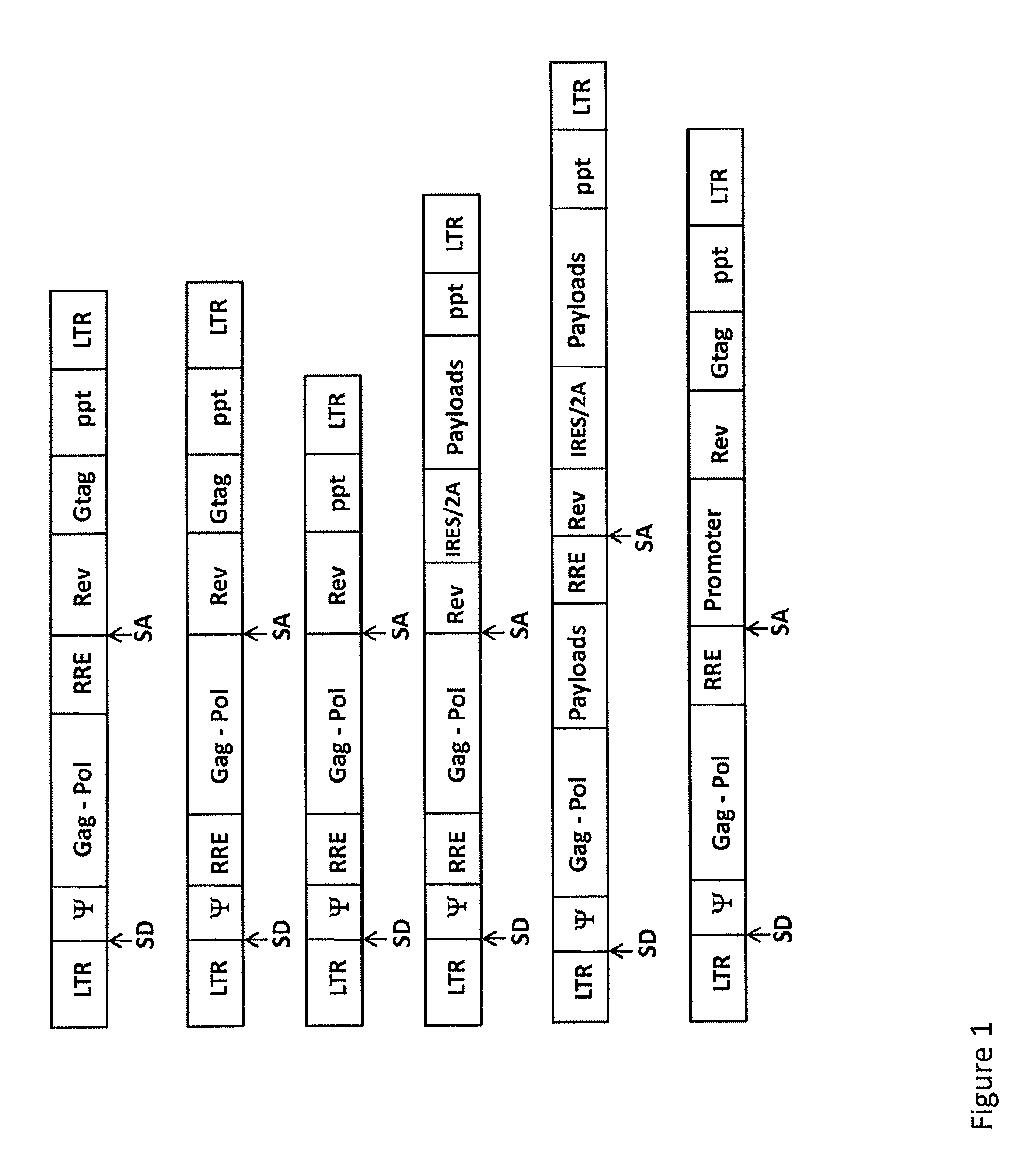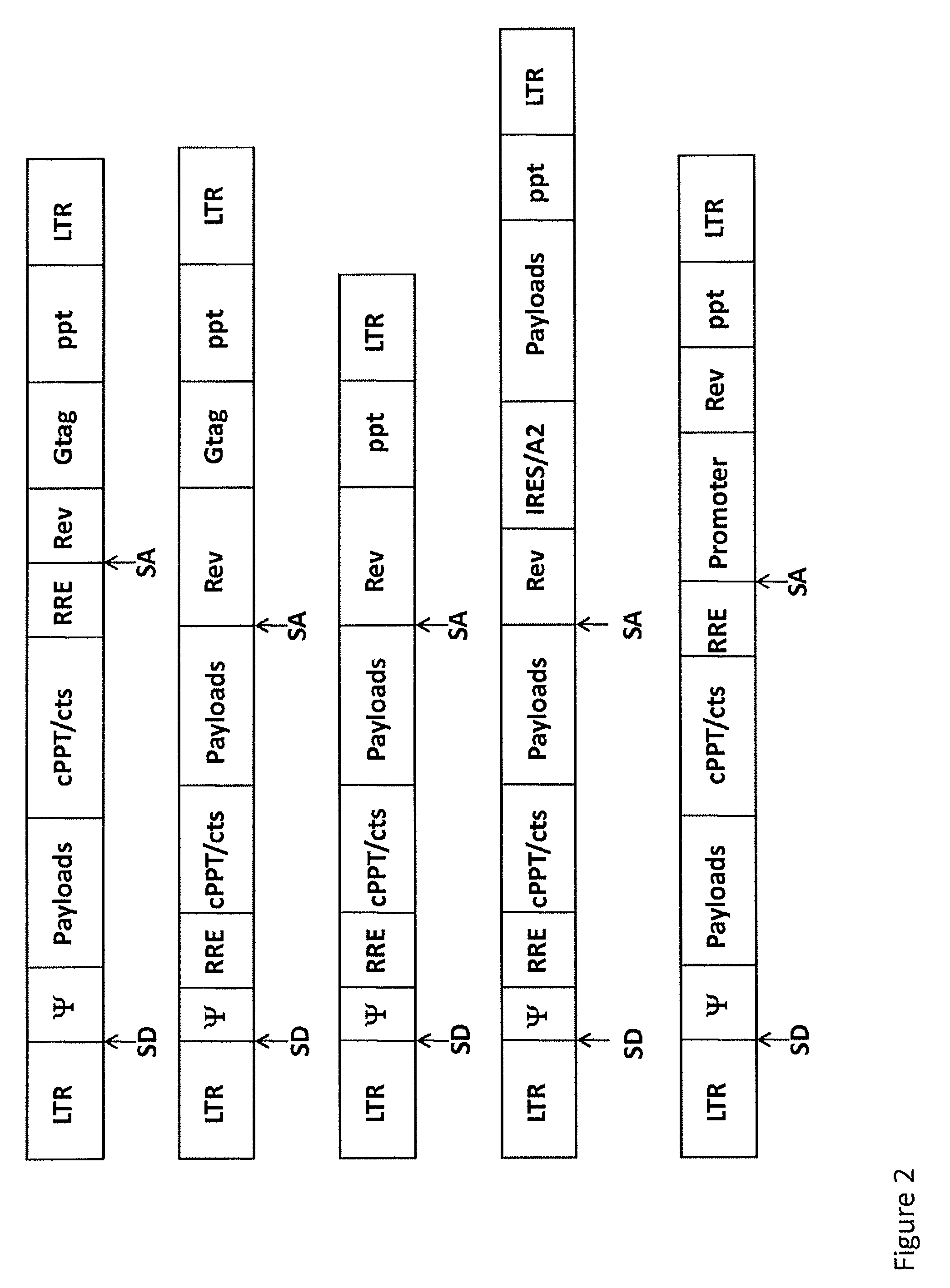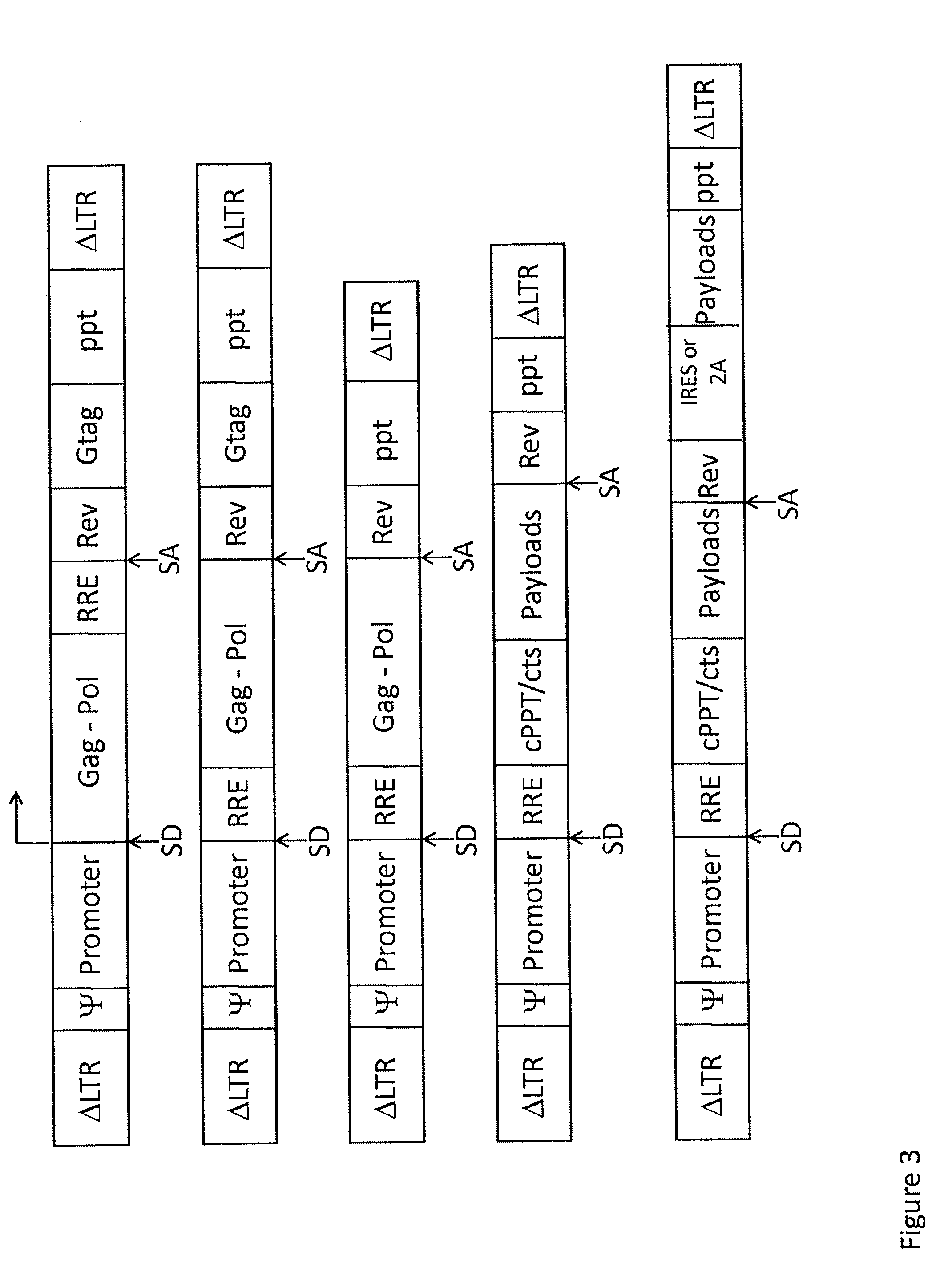Lentivirus-based immunogenic vectors
a technology of immunogenic vectors and lentivirals, which is applied in the field of improved lentiviral-based immunogenic vectors, can solve the problems of limiting the development of hiv vaccines, unable to prove true effectiveness of hiv vaccines, and virtually impossible sterilization of immunity to the virus. to achieve the effect of increasing the effectiveness and/or immunogenicity of vectors
- Summary
- Abstract
- Description
- Claims
- Application Information
AI Technical Summary
Benefits of technology
Problems solved by technology
Method used
Image
Examples
example 1
[0142]In this example, it was demonstrated that the highly immunogenic lentiviral vectors of the present invention elicit long-term anti-HIV immunity in mice, particularly when used in a prime / boost protocol.
[0143]Among the current arsenal of genetic immunization tools, viral vectors, and especially lentiviral vectors, have demonstrated great promise. Engineered lentiviral vectors can infect a wide variety of cell types and, as opposed to other vectors, they can transduce even non-actively replicating cells, including dendritic cells, thus eliciting strong immunogenicity to the antigens which is beneficial to the treatment of a variety of diseases. Lentiviral vector constructs were modified to be used as vehicles to deliver HIV-derived antigens. A VSV-G pseudotyped, HIV-based lentiviral vector carrying the full-length Gag, Pol and Rev genes from HIV and driven by the native HIV 5′ LTR was used in the lentiviral vector of the present invention. A person of skill in the art would know...
example 2
[0144]In this example, it was demonstrated that immunization with HIV-based lentiviral vectors resulted in minimal anti-vector neutralization activity.
[0145]Viral (adenoviral and lentiviral) vectors represent one of the most attractive means of vaccination, as they typically induce strong antigen immunity. However, due to the adenoviral vector's widespread existence in nature it is not unusual for adenoviral vector based vaccines to generate immune responses to the adenoviral vector itself. These anti-adenoviral vector responses, either due to pre-existing immunity against the wild type adenovirus or induced by adenoviral vector administration, have been extensively described for a variety of adenoviral vectors, and can result in vaccine neutralization. This vaccine neutralization results in dramatic decrease of vaccine efficacy, and vaccine vectors overcoming this obstacle are needed.
[0146]It was assessed whether repeated administrations of the lentiviral vectors of the present inv...
example 3
[0147]In this example, it was demonstrated that heterologous boosting in prime / boost protocols utilizing the lentiviral vectors of the invention enhanced the immunogenicity of an adenoviral vaccine vector and circumvented vaccine neutralization.
[0148]Heterologous “prime-boost” protocols with two different viral vectors have been shown to markedly increase the immunogenicity of the individual viral vectors, and minimize the generation of vaccine neutralizing activity. Pseudotyped lentiviral vectors are one of the most effective vehicles for delivering antigen payloads since they can infect a wide variety of cells, and possess the ability to transduce dividing as well as non-dividing cells. The lentiviral vector-based vaccine disclosed herein was tested for immunogenicity using a heterologous prime / boost strategy with an adenoviral based vector vaccine.
[0149]One of the lentiviral vectors of the present invention was engineered to carry full-length HIV Gag, Pol and Rev genes, and pseud...
PUM
| Property | Measurement | Unit |
|---|---|---|
| temperatures | aaaaa | aaaaa |
| nucleic acid | aaaaa | aaaaa |
| transmission | aaaaa | aaaaa |
Abstract
Description
Claims
Application Information
 Login to View More
Login to View More - R&D
- Intellectual Property
- Life Sciences
- Materials
- Tech Scout
- Unparalleled Data Quality
- Higher Quality Content
- 60% Fewer Hallucinations
Browse by: Latest US Patents, China's latest patents, Technical Efficacy Thesaurus, Application Domain, Technology Topic, Popular Technical Reports.
© 2025 PatSnap. All rights reserved.Legal|Privacy policy|Modern Slavery Act Transparency Statement|Sitemap|About US| Contact US: help@patsnap.com



